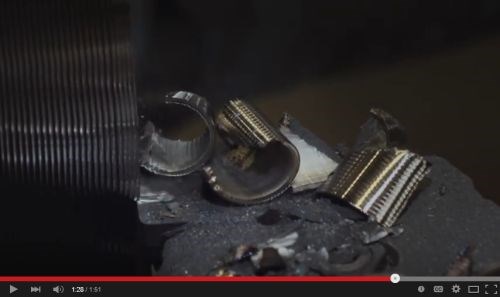Coming Soon: New Duratomic
On April 1, Seco launches an upgrade to its well-known workhorse coated cutting tool line.
Share





Certain products succeed long enough that the product brand acquires its own cachet apart from the originating company name. In certain circles, Seco’s “Duratomic” is like that. The toughness and wear-resistance of this cutting tool coating have made it successful in steel machining applications such as the one portrayed in this video. When the coating was introduced in 2007, Seco says it represented the first time a coating had been manipulated on the atomic level. And in few days, the company says, Duratomic will be introduced again.
Launching April 1, a complete overhaul to the Duratomic line will improve upon the previous successful coating with new coating technology delivering 20 percent greater life across most of the tool’s applications, including heavy, low-speed turning applications that are commonplace among oilfield manufacturers that have applied this tooling in growing numbers in recent years.
Another important feature to be introduced is “edge intelligence,” the company says. The dark color of Duratomic inserts has made edge wear difficult to see. This has been a challenge in high-volume facilities that change inserts frequently, because inserts with unused edges sometimes get discarded. The new Duratomic addresses this challenge with a multilayer system that the company says makes tool wear easy to visually gage.
Learn more by visiting the Duratomic site, which includes a countdown clock ticking the moments until the line’s relaunch.

Related Content
-
Orthopedic Event Discusses Manufacturing Strategies
At the seminar, representatives from multiple companies discussed strategies for making orthopedic devices accurately and efficiently.
-
Selecting a Thread Mill That Matches Your Needs
Threading tools with the flexibility to thread a broad variety of holes provide the agility many shops need to stay competitive. They may be the only solution for many difficult materials.
-
How to Troubleshoot Issues With Tool Life
Diagnosing when a tool is failing is important because it sets an expectation and a benchmark for improvements. Finding out why gives us a clue for how to fix it.
























